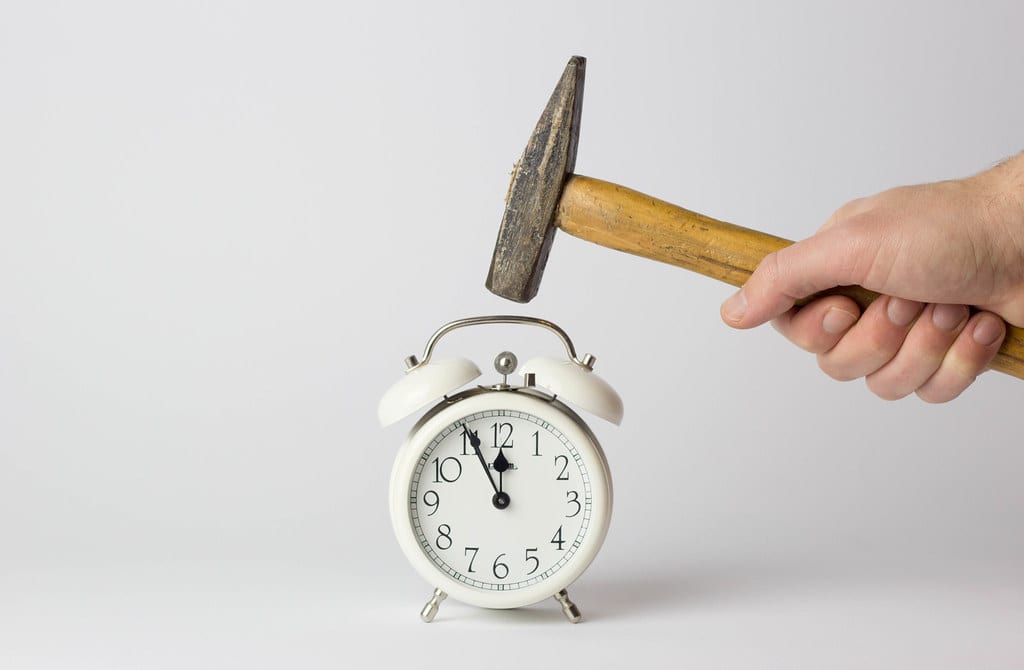When my alarm wakes me up at 7:30am on Monday, the first thought that pops into my head is “Oh dear lord, why?†After a beautiful weekend of sleeping in, enough to fill my heart's content, readjusting to my weekday schedule is a constant challenge. I feel tired, irritable, and my thoughts are as murky as the cheap coffee I pick up on my way to work. It can be hours before I feel as alert as I do on weekends. Sometimes I worry that this is affecting my mood and the quality of my work. While traveling during a recent vacation, I learned of a concept called “social jetlag” which has helped me understand my struggle. It's based on the phenomenon of “jetlag”, which is when someone's sleep schedule is disrupted due to flying to a very different timezone.

Social jetlag happens when you experience a discrepancy between your social clock (going to work, spending time with friends) and your circadian clock (going to bed, eating, waking up). Circadian clocks are a biological phenomenon that are found in large swaths of life, from tiny microbes to large, complex mammals like us. The master clock in humans is found in the brain and is strongly influenced by cycles of light and dark, such as day and night. These clocks can directly affect how the cells and tissues in our body operate and respond to stimulus. They can affect our metabolism, our mood, and how our genes are expressed. Given how far-reaching these clocks can be, it's not hard to imagine how differences in what our bodies expect and experience can cause some problems.

The discrepancies in social jetlag can range from just one to several hours. Although this kind of jet lag has nothing to do with switching time zones, it does carry a lot of the same symptoms. These include unpredictable moods, poor memory, reduced coordination, and a decrease in work performance. However, the most important symptom, which is probably the root for many of the others, is difficulty getting the right quantity and quality of sleep. Since the “best†amount of sleep varies from person-to-person, it's difficult to give an exact number, but for adults it's safe to say that 7 to 9 hours of sleep is probably enough.
The term “social jetlag†was initially created by German biologist Till Roenneberg, who noticed the phenomenon when studying the differences between “night owls†and “morning larksâ€. He refers to these groups as “chronotypesâ€, a human phenotype that describes sleep patterns. When someone's chronotype is out of phase with their social/work schedule, then sleep patterns are more likely to be disrupted. It seems that the greater the difference, the worse the symptoms; a study published this year showed a linear correlation between the magnitude of social jetlag (in terms of hours) and the likelihood of experiencing symptoms of depression. Another study found associations between social jetlag and poor diets.
So how can you prevent social jetlag? Perhaps not surprisingly, the most important thing is to set up a healthy and controlled sleep schedule. You can train yourself to fall asleep at the right time by using many simple tools, such as a reduced caffeine intake after the morning, removing any screens or bright lights in the bedroom, and introducing an activity that relaxes you right before going to bed. Of course if you're just someone that can't get to sleep before 1am, try shifting your work hours later in the day so you're not fighting your body as much. This isn't possible for many people, but maybe in the future we can begin to care less about regimented hours and more about lifestyles that work for everyone.
 Trevor Adams is a Ph.D. Student in the Integrated Life Sciences program at the University of Georgia. He is interested in how the molecular bits of life shape our world. His hobbies include hiking, reading, and hanging out with his cat Bustelo. More from Trevor Adams.
Trevor Adams is a Ph.D. Student in the Integrated Life Sciences program at the University of Georgia. He is interested in how the molecular bits of life shape our world. His hobbies include hiking, reading, and hanging out with his cat Bustelo. More from Trevor Adams.
About the Author
- athenssciencecafehttps://athensscienceobserver.com/author/athenssciencecafe/April 17, 2020
- athenssciencecafehttps://athensscienceobserver.com/author/athenssciencecafe/April 12, 2020
- athenssciencecafehttps://athensscienceobserver.com/author/athenssciencecafe/April 3, 2020
- athenssciencecafehttps://athensscienceobserver.com/author/athenssciencecafe/March 30, 2020







